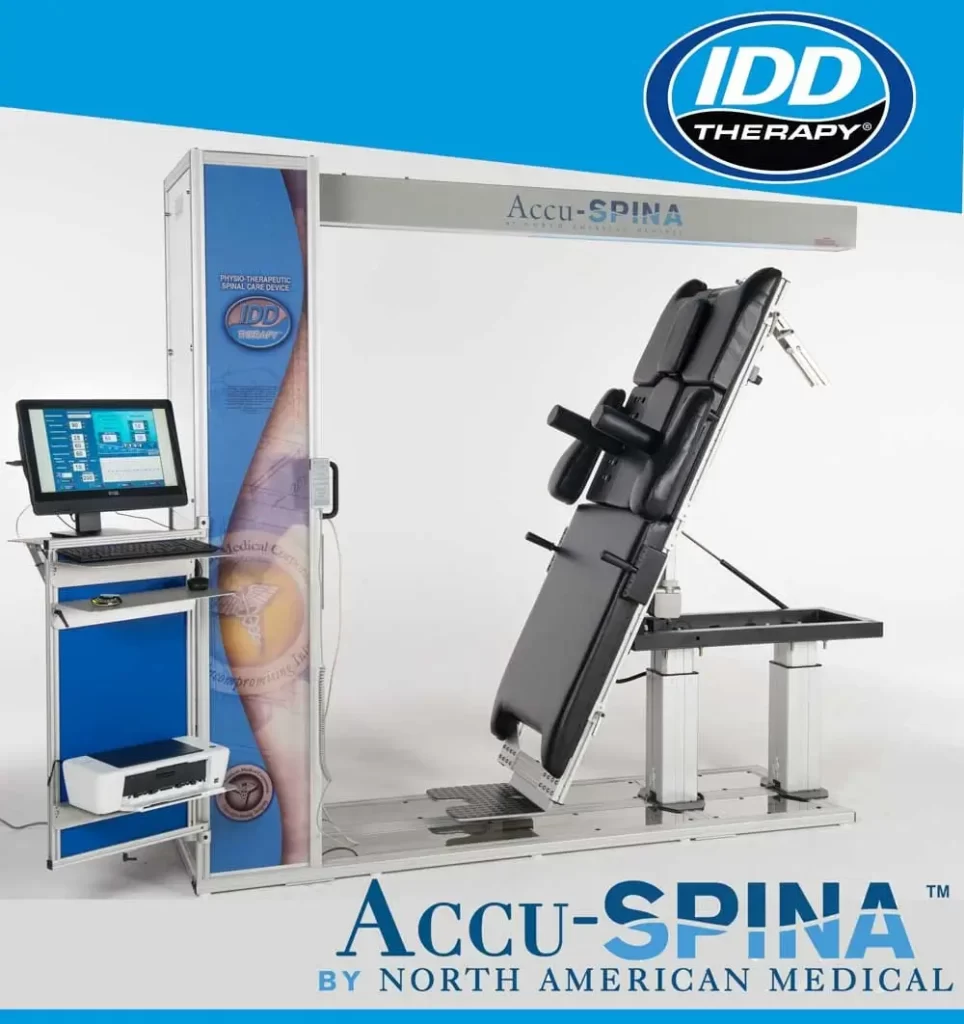Nonsurgical spinal decompression is a type of motorized traction that helps relieve back pain & neck pain from disc herniations and nerve compression. Spinal decompression works by gently stretching the spine. It’s a unique system that provides a wide range of treatment options to aid in the relief of chronic back pain. It gently stretches the spine, joints, and muscles in the back, neck, hips, and thighs. Spinal decompression offers safe and effective stretching of the lumbar, thoracic, and cervical spine.


